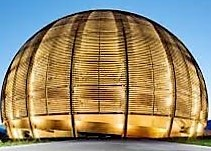Speaker
Description
Simulations of explosive nucleosynthesis in novae predict the production of the radioisotope $^{22}\text{Na}$. Its half-life of 2.6 yr makes it a very interesting astronomical observable by allowing space and time correlations with the astrophysical object. This radioisotope should bring constraints on nova models. It may also help to explain abnormal $^{22}\text{Ne}$ abundance observed in presolar grains and in cosmic rays. Its gamma-ray line at 1.275 MeV has not been observed yet by the gamma-ray space observatories. Accurate yields of $^{22}\text{Na}$ are required. At peak nova temperatures, the main destruction reaction $^{22}\text{Na}$(p, γ)$^{23}\text{Mg}$ has been found dominated by a resonance at ER=0.204 MeV corresponding to the Ex=7.785 MeV excited state in $^{23}\text{Mg}$. However, the measured strengths of this resonance disagree by more than a factor 3, see Ref. [1, 2].
An experiment was performed at GANIL facility to measure both the lifetime and the proton branching ratio of the key state at Ex=7.785 MeV. The principle of the experiment is based on the one used in [3]. With a beam energy of 4.6 MeV/u, the reaction $^{3}\text{He}$($^{24}\text{Mg}$, α)$^{23}\text{Mg}^*$ populated the state of interest. This reaction was measured with particle detectors (spectrometer VAMOS++, silicon detector SPIDER) and gamma tracking spectrometer AGATA. The expected time resolution with AGATA high space and energy resolutions is 1 fs. Several Doppler based methods were used to analyse the lineshape of γ-ray peaks.
Our new results will be presented. Doppler shifted γ-ray spectra from $^{23}\text{Mg}$ states were improved by imposing coincidences with the excitation energies reconstructed with VAMOS. This ensured to suppress the feeding from higher states. Lifetimes in $^{23}\text{Mg}$ were measured with a new approach. Proton emitted from unbound states in $^{23}\text{Mg}$ were also identified. With an higher precision on the measured lifetime and proton branching ratio of the key state, a new value of the resonance strength ωγ was obtained, it is below the sensitivity limit of the direct measurement experiments. The $^{22}\text{Na}$(p, γ)$^{23}\text{Mg}$ thermonuclear rate has been so reevaluated with the statistical Monte Carlo approach. The amount of $^{22}\text{Na}$ ejected during novae will be discussed as a tool for better understanding the underlying novae properties. The detectability limit of $^{22}\text{Na}$ from novae and the observation frequency of such events will also be discussed with respect to the next generation of gamma-ray space telescopes.
References
[1] A.L. Sallaska et al., Phys. Rev. L 105, 152501 (2010).
[2] F. Stegmuller et al., Nuc. Phys. A 601, 168-180 (1996).
[3] O.S. Kirsebom et al., Phys. Rev. C 93, 1025802 (2016).




